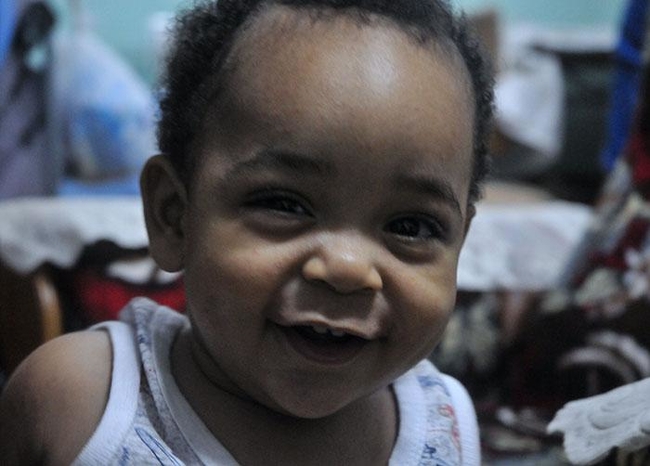Cuba closes 2018 with the lowest infant mortality rate in its history
Granma | Thursday, 10 January 2019 | Click here for original article

For the second year in a row, the country reached the end of 2018 with the lowest infant mortality rate in its history, at 4.0 per thousand live births
We have expected the same news every January for several decades. At the beginning of each New Year, we are once again presented with the figures that reveal that thousands of women have successfully completed their pregnancy, thousands of babies are now growing, and thousands of Cuban families are enjoying a desired son or daughter.
To note that for the eleventh consecutive year, Cuba maintains its infant mortality rate below five per thousand live births, is reason enough to rejoice.
But to confirm that for the second year in a row, the country reached the end of 2018 with the lowest infant mortality rate in its history, at 4.0 per thousand live births, is more than extraordinary – it is comforting. With respect to the previous year – when the figure was 4.044 deaths per thousand live births – the rate was reduced by 0.081, which represents four fewer deaths, standing at 3.963 deaths per thousand live births.
This figure is not reached through force of habit or by chance. It is the result of the determined will to prioritise universal health access, and inclusive and human social development. It is the expression of efforts and perseverance on the part of thousands of health professionals throughout Cuba – from doctors’ offices to hospital services, with the decisive participation of maternity homes, health centers, perinatal care wards, neonatal and pediatric intensive care units; of the medical genetics network, of neonatal surgery and of cardio-pediatric care; without neglecting intersectoral and community support for health measures.
Preliminary data for 2018 offered to Granma by the Medical Records and Health Statistics Directorate – processed from the early hours of January 1st – reveals that in the recently concluded year, there were a total of 116,320 births registered in Cuba, representing 1,349 more than in 2017; while 461 children under one year of age died, four fewer than in 2018.
The exact scope of these statistics, illustrating the extent to which deaths of our children have been reduced, is appreciated if we consider, for example, that in 1970, the country saw 9,173 deaths, with an infant mortality rate of 38.7.
“At the end of a year of unquestionable achievements and improvements in the main health indicators, it is fitting to recognise all workers of the health system, who are the true protagonists of these results, which confirm the magnitude of the work of the Revolution, now in its 60th anniversary. In this effort, workers linked to the Maternal and Child Care Program deserve special mention,” stated Dr. Roberto Álvarez Fumero, head of the Maternal and Child Department of the Ministry of Public Health (Minsap).
He added that the measures implemented to improve the family doctor and nurse program, and the development achieved by the community medical genetics network and the national diagnosis, management and prevention of congenital defects and genetic diseases program, contributed to reducing the country’s infant mortality rate. For six consecutive years, the infant mortality rate due to birth defects has been maintained below one per thousand live births; and at the close of 2018 stood at 0.8.
Likewise, Dr. Álvarez highlighted the work undertaken by perinatal special care wards, neonatology services, intensive pediatric therapies, the cardio-pediatric network and the William Soler Pediatric Cardio Center; which also contributed to reducing mortality rates associated with hyaline membrane disease, intraventricular hemorrhage, influenza and pneumonia, healthcare-acquired sepsis and intestinal infections.
Meanwhile, a similar mortality rate due to pulmonary hemorrhage; other perinatal conditions; neonatal sepsis; neonatal pneumonia; bacterial, viral and unspecified meningitis; and poorly diagnosed or unknown causes was maintained.
He noted that from the beginning of 2018, the Ministry of Health implemented a plan of measures aimed at maintaining and improving infant mortality indicators, which included eight components: the improvement of the management and control systems of the program in those provinces with the greatest problems; strengthening the work of the cadres involved in the management of the Maternal and Child Care Program; a professional training plan to raise the necessary skills among health personnel; research development; the assurance of necessary resources; a broad health promotion strategy to modify habits, customs and increase population’s self-responsibility in maternal and child health care; as well as the implementation of specific measures to reduce the main causes of infant mortality.
On this last aspect, Dr. Álvarez mentioned the introduction of new guidelines for the most frequent obstetric conditions, including predictive technology for early diagnosis and prevention of intrauterine growth restriction, prematurity, hypertensive disorders of pregnancy, diabetes and hemolytic disease of the newborn, among others.
Reasons to celebrate this January are not lacking, but we can also be proud of living in a country that strives every day to preserve the most sacred thing: children’s lives.
TERRITORIES WITH THE LOWEST INFANT MORTALITY RATES:
2.1 Isla de la Juventud special municipality
2.6 Camagüey
2.7 Cienfuegos
2.8 Granma
2.9 Sancti Spíritus
3.0 Pinar del Río
3.5 Villa Clara
3.6 Santiago de Cuba
3.7 Holguín
3.8 Las Tunas
4.0 Artemisa
TERRITORIES THAT FAILED TO MEET GOALS AND SHOWED RATES HIGHER THAN 4.0:
7.3 Guantánamo
6.3 Mayabeque
4.9 La Habana
4.4 Ciego de Ávila
4.1 Matanzas
OTHER INDICATORS:
- The under-five mortality rate decreased from 5.5 in 2017 to 5.3 in 2018.
- The preschool child mortality rate was reduced from 3.2 to 3.0 per 10,000 preschool age inhabitants.
- The school-age mortality rate remains below 3.0 since 2002.
- Births increased by 1,349 compared to 2017.






